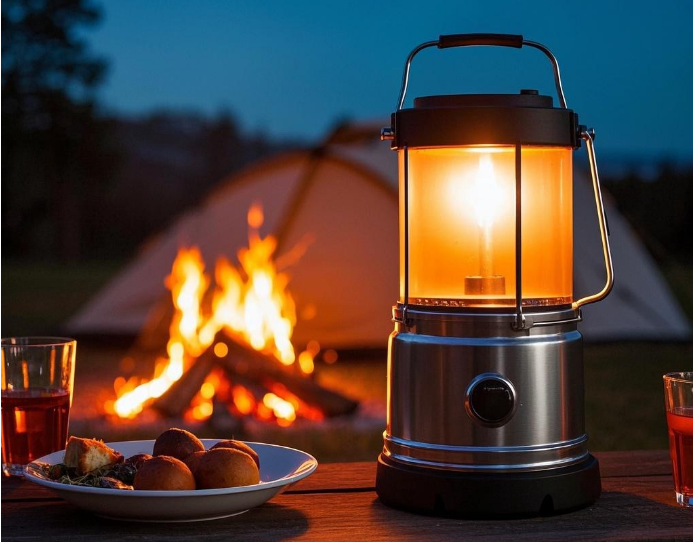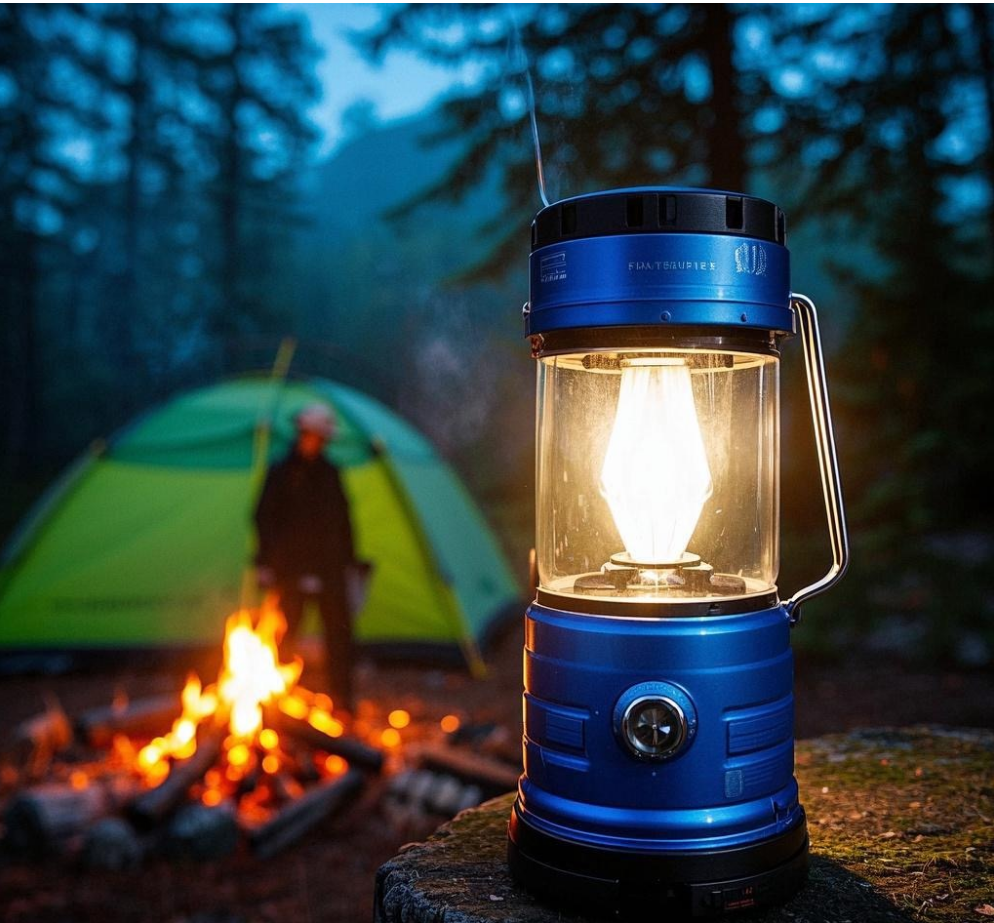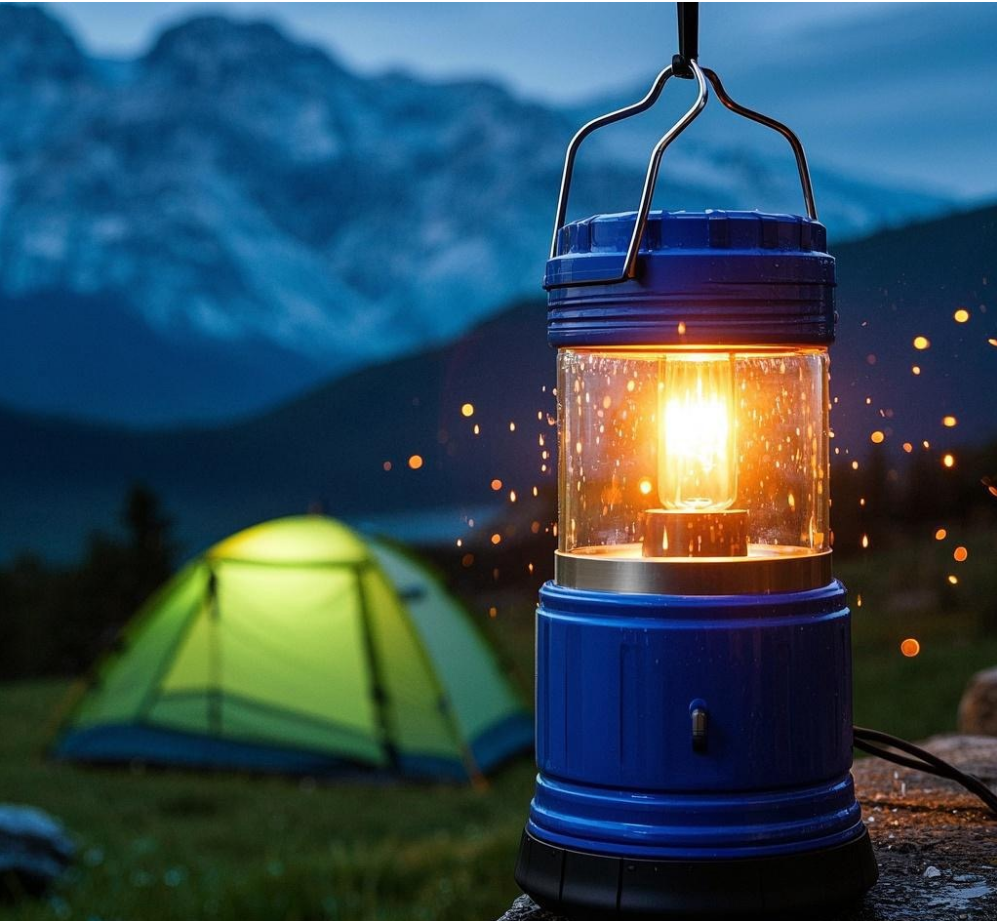
When you choose camping lights, understanding IP ratings becomes crucial. These ratings measure how well a product resists dust and water. For outdoor adventures, this ensures your light source performs reliably in unpredictable conditions. IP rated camping lights offer protection against environmental elements, making them ideal for camping trips. By knowing what these ratings mean, you can select lights that match your needs and withstand the challenges of nature.
A proper understanding of IP ratings not only enhances safety but also ensures the durability of your camping gear.
Key Takeaways
- IP ratings show how well camping lights block dust and water. Higher numbers mean better protection, helping lights work in tough conditions.
- Pick camping lights based on where you’ll use them. For dusty places, choose a rating of 5 or 6. For wet areas, get lights rated 5 or higher for splashes, and 7 or 8 for underwater use.
- Take care of your lights. Clean them after trips and check seals for damage. Good care makes your camping gear last longer and work better.
- Buying lights with higher ratings, like IP67 or IP68, is smart. These lights handle bad weather and last longer, so you won’t replace them often.
- Always look at the IP rating before buying. This helps you pick lights that fit your camping needs and protect against the outdoors.
What Are IP Ratings?
Definition and Purpose of IP Ratings
IP ratings, or Ingress Protection ratings, classify how well a device resists dust and water. This system follows international standards, ensuring consistency across products. Each rating consists of two digits. The first digit indicates protection against solid particles like dust, while the second digit measures resistance to liquids such as water. For example, an IP67 rating means the device is completely dustproof and can handle temporary submersion in water.
The IP rating system plays a crucial role in evaluating waterproofing and durability. It helps you understand how well a product can withstand environmental challenges. Whether you’re dealing with light rain or planning to camp near water, these ratings guide you in choosing reliable gear.
Why IP Ratings Matter for Outdoor Gear
When you’re outdoors, your equipment faces unpredictable conditions. IP ratings ensure your gear can handle these challenges. For instance:
- IP54: Offers limited dust protection and resists water splashes, making it suitable for light rain.
- IP65: Provides complete dust protection and resists low-pressure water jets, ideal for heavy rain.
- IP67: Ensures total dust protection and temporary water submersion, perfect for wet environments.
These ratings highlight the importance of selecting the right gear. Higher IP ratings mean better durability, which reduces the risk of damage. This saves you money on repairs or replacements. For camping, IP rated camping lights with higher ratings ensure reliable performance, even in harsh weather.
Tip: Always check the IP rating before purchasing outdoor gear. It helps you match the product to your specific needs and environment.
Understanding the Numbers in IP Ratings

The First Digit: Protection Against Solids
The first digit in an IP rating measures how well a device resists solid objects like dust or debris. This number ranges from 0 to 6, with higher numbers offering better protection. For example, a rating of 0 means no protection, while a rating of 6 ensures complete dust-tight sealing. Manufacturers test devices under controlled conditions to determine this level of protection.
Here’s a breakdown of the levels:
| Level | Effective against | Description |
|---|---|---|
| 0 | No protection against contact and ingress of objects | |
| 1 | Any large surface of the body, such as the back of a hand | No protection against deliberate contact with a body part |
| 2 | Fingers or similar objects | |
| 3 | Tools, thick wires, etc. | |
| 4 | Most wires, slender screws, large ants, etc. | |
| 5 | Dust protected | Ingress of dust is not entirely prevented, but it must not enter in sufficient quantity to interfere with the safe operation of the equipment. |
| 6 | Dust-tight | No ingress of dust; complete protection against contact (dust-tight). A vacuum must be applied. Test duration of up to 8 hours based on airflow. |
When choosing IP rated camping lights, consider the environment. For dusty trails or sandy campsites, a rating of 5 or 6 ensures reliable performance.
The Second Digit: Protection Against Liquids
The second digit evaluates how well a device resists water. This number ranges from 0 to 9, with higher numbers offering better waterproofing. For instance, a rating of 0 means no protection against water, while a rating of 7 allows temporary submersion. Devices with a rating of 8 or 9 can handle prolonged immersion or high-pressure water jets.
For camping, a rating of 5 or higher is ideal. It ensures your light can withstand rain or accidental splashes. If you plan to camp near water, consider a rating of 7 or above for added safety.
Common Examples of IP Ratings
Understanding common IP ratings helps you make informed decisions. Here are a few examples:
- IP54: Protects against limited dust and water splashes. Suitable for light rain.
- IP65: Offers complete dust protection and resists low-pressure water jets. Ideal for heavy rain.
- IP67: Ensures total dust protection and temporary submersion. Perfect for wet environments.
- IP68: Provides complete dust and water protection. Designed for extreme conditions like prolonged immersion.
By knowing these ratings, you can select camping lights that match your needs. For instance, IP rated camping lights with a rating of IP67 or higher are excellent for challenging terrains or wet weather.
Comparing IP Rated Camping Lights

IP54: Suitable for Light Rain and Dust
IP54-rated camping lights provide basic protection against environmental elements. These lights resist limited amounts of dust and water splashes, making them a practical choice for mild outdoor conditions. If you plan to camp in areas with occasional light rain or minimal dust, this rating offers sufficient durability.
For example, an IP54 light can handle a drizzle or a dusty trail without compromising its functionality. However, it’s not designed for heavy rain or prolonged exposure to water. You should consider this rating if your camping trips involve relatively calm weather and less challenging terrains.
Tip: Always store IP54-rated lights in a dry place when not in use to maintain their performance.
IP65: Ideal for Heavy Rain
IP65-rated camping lights step up the level of protection. These lights are completely dustproof and can withstand low-pressure water jets. This makes them ideal for camping in areas with heavy rain or strong winds. Whether you’re hiking through dense forests or setting up camp during a storm, these lights ensure reliable performance.
You can confidently use IP65-rated lights in wet conditions without worrying about water damage. Their robust design makes them a popular choice for outdoor enthusiasts who frequently face unpredictable weather. If you want a balance between durability and affordability, this rating is a great option.
IP67: Submersible for Short Periods
IP67-rated camping lights offer advanced protection. These lights are fully dustproof and can handle temporary submersion in water. If your camping adventures involve crossing streams or camping near lakes, this rating provides peace of mind. You can accidentally drop the light into water, and it will still function properly.
This rating is perfect for wet environments or situations where water exposure is unavoidable. However, it’s important to note that IP67 lights are not designed for prolonged submersion. For most campers, this level of protection ensures durability in challenging conditions.
Note: After using IP67-rated lights in water, dry them thoroughly to prevent long-term damage.
IP68: Designed for Extreme Conditions
IP68-rated camping lights provide the highest level of protection against dust and water. These lights are completely dustproof and can withstand prolonged immersion in water. If you plan to camp in extreme environments, such as areas with heavy rain, flooding, or near water bodies, this rating ensures your light remains functional.
The “6″ in the rating guarantees total protection from dust, making these lights ideal for sandy deserts or dusty trails. The “8″ indicates that the light can handle continuous submersion in water beyond one meter. Manufacturers test these lights under strict conditions to ensure they meet these standards.
Why Choose IP68 for Camping?
- Unmatched Durability: IP68-rated lights are built to endure the harshest conditions. Whether you’re hiking through muddy terrain or kayaking, these lights won’t fail you.
- Versatility: You can use these lights in diverse environments, from dry deserts to wet marshlands.
- Peace of Mind: Knowing your light can handle extreme conditions allows you to focus on your adventure.
Tip: Always check the manufacturer’s specifications for the exact depth and duration the light can handle underwater. This ensures you use it within safe limits.
Is IP68 Worth the Investment?
IP68-rated camping lights often cost more than lower-rated options. However, their durability and reliability make them a worthwhile investment for serious outdoor enthusiasts. If you frequently camp in challenging terrains or unpredictable weather, these lights provide the protection you need. For casual campers, a lower rating might suffice, but IP68 offers unmatched peace of mind.
By choosing IP rated camping lights with an IP68 rating, you ensure your gear performs reliably, even in the most demanding conditions.
Choosing the Right IP Rating for Camping
Evaluating Your Camping Environment
Your camping environment plays a significant role in determining the right IP rating for your lights. Start by assessing the conditions you expect to encounter. Will you camp in dry, dusty deserts or near water sources like rivers and lakes? For dusty trails, lights with a first-digit rating of 5 or 6 ensure reliable performance. If rain or water exposure is likely, focus on the second digit. A rating of 5 or higher protects against splashes and rain, while 7 or 8 handles submersion.
Consider the duration of your trip and the terrain. Short trips in mild weather may only require basic protection, such as IP54. However, longer adventures in unpredictable conditions demand higher-rated lights. By understanding your environment, you can choose lights that match your needs.
Matching IP Ratings to Weather and Terrain
Weather and terrain directly impact the performance of your camping lights. For areas with frequent rain, IP65-rated lights offer excellent protection. These lights resist heavy rain and low-pressure water jets. If you plan to camp near water or cross streams, IP67-rated lights provide peace of mind. They can handle temporary submersion without damage.
For extreme conditions, such as heavy flooding or sandy deserts, IP68-rated lights are the best choice. These lights withstand prolonged immersion and block all dust. Matching the IP rating to your environment ensures your lights remain functional, no matter the challenges.
Balancing Cost with Protection Needs
Higher IP ratings often come with higher costs. To balance your budget with your needs, evaluate how much protection you truly require. Casual campers in mild conditions may find IP54-rated lights sufficient. These lights are affordable and offer basic protection. For frequent campers or those exploring harsh terrains, investing in IP67 or IP68-rated lights ensures durability and reliability.
Think about how often you camp and the environments you visit. Spending more on durable, IP rated camping lights can save you money in the long run by reducing replacements. Choose a rating that aligns with your protection needs and budget.
Maintenance Tips for IP Rated Camping Lights
Cleaning and Storing Your Lights
Proper cleaning and storage extend the lifespan of your camping lights. After each trip, wipe the exterior with a soft, damp cloth to remove dirt and debris. For stubborn grime, use a mild soap solution, but avoid submerging the light unless it has a high IP rating like IP67 or IP68. Dry the light thoroughly before storing it to prevent moisture damage.
Store your lights in a cool, dry place away from direct sunlight. Excessive heat or humidity can degrade the seals and materials. Use a protective case or pouch to shield the light from scratches or impacts during storage. If your light uses batteries, remove them before storing to avoid leakage.
Tip: Regular cleaning prevents dust and water buildup, ensuring your IP rated camping lights perform reliably on every trip.
Inspecting for Damage or Wear
Frequent inspections help you identify potential issues before they worsen. Check the seals, buttons, and casing for cracks or wear. Damaged seals compromise the waterproofing, reducing the effectiveness of the IP rating. Test the light to ensure it functions correctly, especially after exposure to harsh conditions.
Pay attention to the battery compartment. Corrosion or residue can affect performance. Clean it gently with a dry cloth if needed. If you notice significant damage, consider contacting the manufacturer for repairs or replacements.
Ensuring Proper Sealing After Use
Maintaining the seals is crucial for waterproofing. After cleaning, inspect the seals for dirt or debris. Even small particles can prevent a proper seal. For lights with removable parts, such as battery compartments, ensure they are securely closed before use.
If your light has been submerged or exposed to heavy rain, double-check the seals afterward. Replace worn or damaged seals promptly to maintain the integrity of the IP rating. Proper sealing ensures your light remains protected against dust and water, even in challenging environments.
Note: Regular maintenance keeps your IP rated camping lights in top condition, ready for your next adventure.
Understanding IP ratings ensures you choose camping lights that can handle environmental challenges. This knowledge helps you select reliable gear that performs well in diverse conditions. By matching IP ratings to your needs, you avoid unnecessary replacements and enjoy long-term benefits, such as:
- Enhanced durability and performance in harsh weather.
- Protection against dust, rain, and humidity, ensuring reliability.
- Prolonged lifespan of outdoor equipment, saving money over time.
Regular maintenance, like cleaning and inspecting seals, keeps your lights functional. Proper care ensures your IP rated camping lights remain ready for every adventure.
FAQ
What does “IP” stand for in IP ratings?
“IP” stands for Ingress Protection. It measures how well a device resists dust and water. The two digits in the rating indicate the level of protection against solids and liquids.
Can I use an IP54-rated light in heavy rain?
No, IP54-rated lights resist light rain and splashes but cannot handle heavy rain. For such conditions, choose an IP65 or higher-rated light.
How do I know if a camping light is waterproof?
Check the second digit in the IP rating. A rating of 5 or higher ensures water resistance. For waterproof lights, look for IP67 or IP68 ratings.
Are higher IP ratings always better?
Higher IP ratings offer more protection but may cost more. Choose a rating based on your camping environment. For casual trips, IP54 may suffice. For extreme conditions, opt for IP67 or IP68.
How often should I inspect my IP-rated camping light?
Inspect your light after every trip. Check for damage, dirt, or worn seals. Regular maintenance ensures reliable performance and extends the light’s lifespan.
Tip: Keep your light clean and dry to maintain its IP rating and functionality.
Post time: Mar-04-2025
 fannie@nbtorch.com
fannie@nbtorch.com +0086-0574-28909873
+0086-0574-28909873





